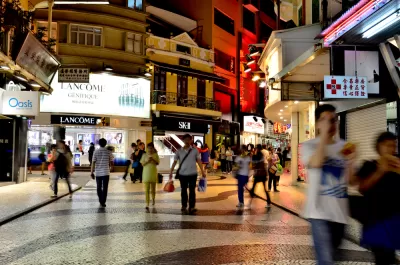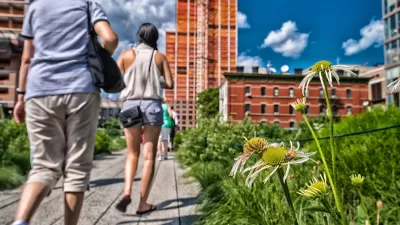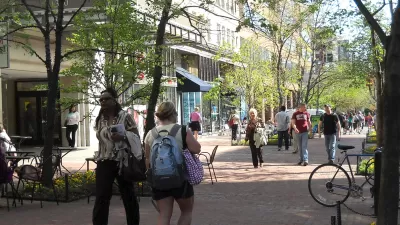Cities are putting together the pieces of walkability, but there's still work to be done in completing the puzzle.

Laura Laker writes a feature story on how cities are making their cities more walkable, and why:
The modern obsession with autonomous and electric vehicles, dockless scooters and bicycles means it is easy to forget the humble pedestrian. However, as almost every journey starts or finishes on foot, we are ignoring a fundamental part of what makes a city great.
To gather the evidence for the story, Laker surveys representatives from organizations like the UK walking charity Living Streets, the design and planning company Arup, and the National Association of City Transportation Officials (Nacto).
The article goes into detail on case studies from Auckland, London, Manchester, Hanoi, Denver, Addis Ababa, and San Francisco. One particularly compelling anecdote from these case studies:
Notoriously car-centric Auckland in New Zealand recently published a report showing pedestrians as the most economically important transport mode in the city. They estimated that policies which put people off walking on Queen Street, a major shopping area, cost NZ$11.7m (£5.9m) a year.
While there are many examples of cities working hard to improve safety for pedestrians, and from numerous approaches the many risks facing pedestrians, Laker makes one thing abundantly clear: there's still along way to go and cities will require a lot of strong leadership to make dreams of a truly walkable city come true.
FULL STORY: What would a truly walkable city look like?

Alabama: Trump Terminates Settlements for Black Communities Harmed By Raw Sewage
Trump deemed the landmark civil rights agreement “illegal DEI and environmental justice policy.”

Study: Maui’s Plan to Convert Vacation Rentals to Long-Term Housing Could Cause Nearly $1 Billion Economic Loss
The plan would reduce visitor accommodation by 25% resulting in 1,900 jobs lost.

Planetizen Federal Action Tracker
A weekly monitor of how Trump’s orders and actions are impacting planners and planning in America.

Waymo Gets Permission to Map SF’s Market Street
If allowed to operate on the traffic-restricted street, Waymo’s autonomous taxis would have a leg up over ride-hailing competitors — and counter the city’s efforts to grow bike and pedestrian on the thoroughfare.

Parklet Symposium Highlights the Success of Shared Spaces
Parklets got a boost during the Covid-19 pandemic, when the concept was translated to outdoor dining programs that offered restaurants a lifeline during the shutdown.

Federal Homelessness Agency Places Entire Staff on Leave
The U.S. Interagency Council on Homelessness is the only federal agency dedicated to preventing and ending homelessness.
Urban Design for Planners 1: Software Tools
This six-course series explores essential urban design concepts using open source software and equips planners with the tools they need to participate fully in the urban design process.
Planning for Universal Design
Learn the tools for implementing Universal Design in planning regulations.
Caltrans
Smith Gee Studio
Institute for Housing and Urban Development Studies (IHS)
City of Grandview
Harvard GSD Executive Education
Toledo-Lucas County Plan Commissions
Salt Lake City
NYU Wagner Graduate School of Public Service





























